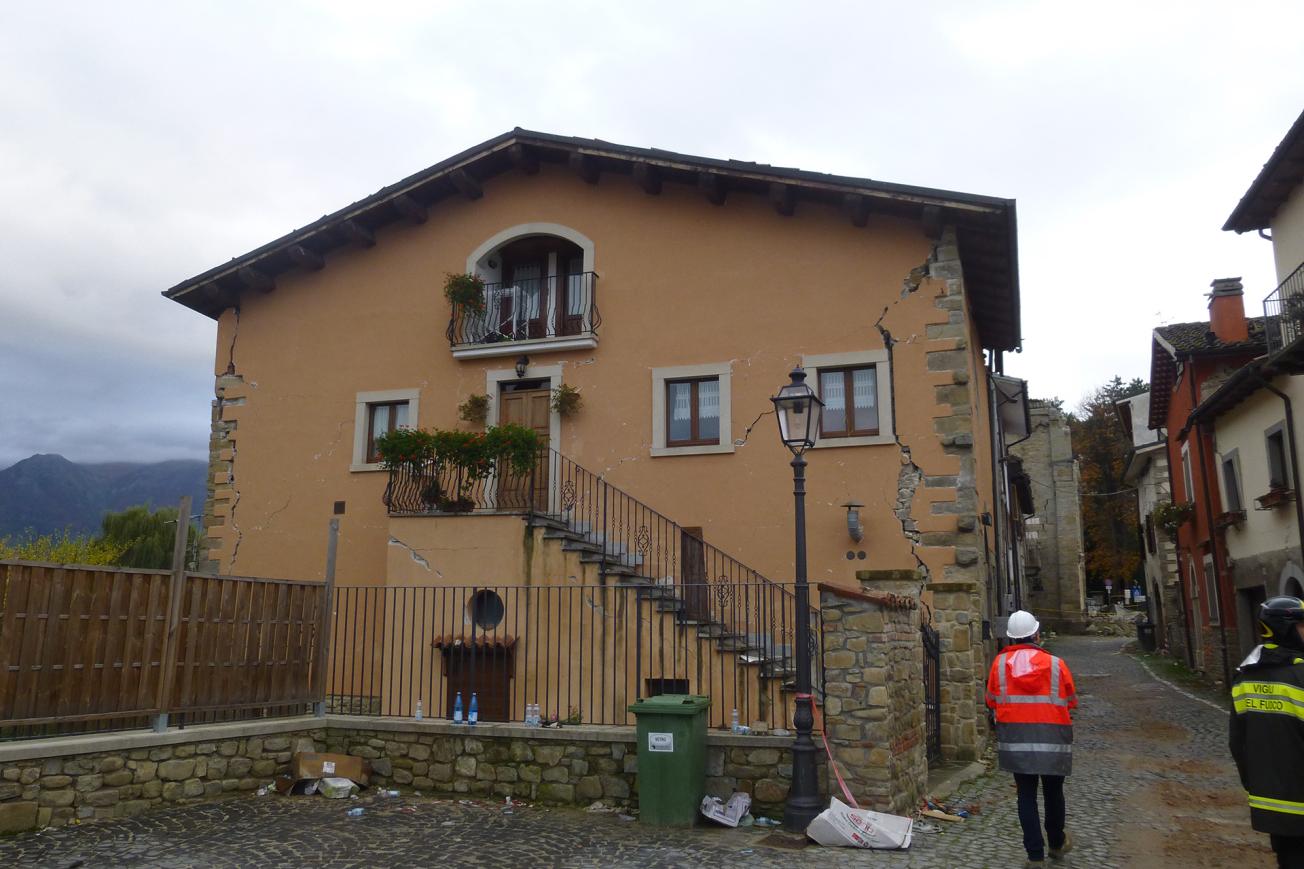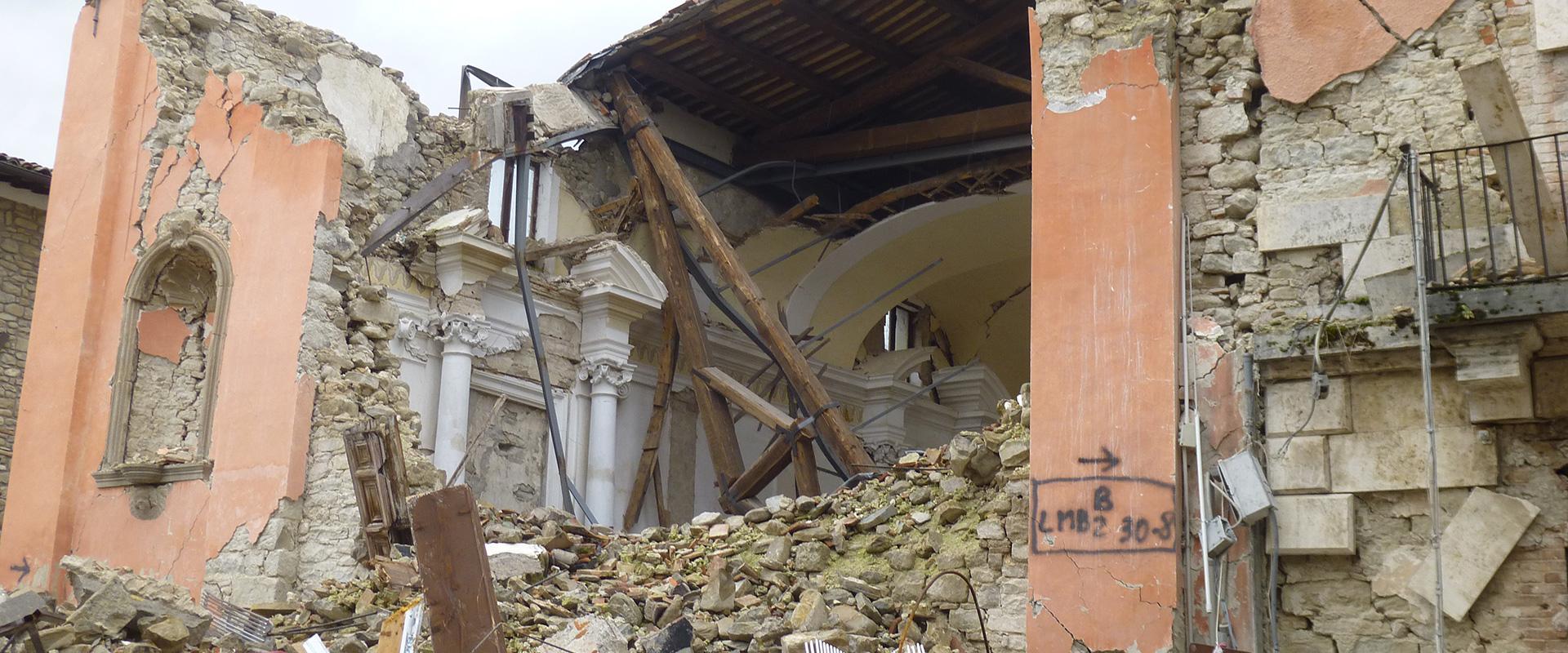
During the post-seismic mission organised by the AFPS from 15 to 21 October 2016.
© BRGM - Nicolas Taillefer
From 15 to 21 October 2016, a multidisciplinary team of 12 people from different organisations, including the BRGM, carried out a post-seismic mission in the Amatrice region in central Italy. The mission was organised by the French Paraseismic Engineering Association (AFPS) following the major earthquake in central Italy on 24 August 2016.
The INGV estimated the earthquake at magnitude 6, occurring at a depth of 4 km. The tremors were felt more than 200km from the epicentre and caused severe damage, especially in the municipalities of Amatrice, Accumolli, Arquata-del-Tronto, Pescara-del-Tronto and Norcia. The final toll stood at 299 victims according to Italy's civil protection authority.
Mission results presented to the Ministry of the Environment
The results of the post-seismic mission were presented on 15 February 2017 at the Ministry of the Environment, Energy and the Sea. The studies covered four areas:
- seismic risks and geotechniques (analysis of the region's seismo-tectonic context and the mechanisms associated with the earthquake),
- behaviour of built structures (reinforced concrete, masonry, bridges and dams),
- emergency action, crisis management and reconstruction,
- validation and improvement of macro-seismic survey procedures (to record the intensity of tremors).
A highly earthquake-prone region
The region is known to be earthquake-prone and recently experienced a devastating earthquake similar to that in the Aquila region in 2009 and the Umbria-Marches region in 1997. Further violent tremors hit the region after the post-seismic mission, on 26 October 2016 (one tremor of magnitude 5.4 on the Richter scale and one of magnitude 5.9 in the Perugia region), then on 30 October 2016 at Norcia (magnitude 6.5). Towns that had already experienced major damage in August were again affected.
Valuable feedback to improve knowledge on seismic risks
The BRGM took part in field visits to severely affected areas, including restricted-access (red) zones in Amatrice, Accumoli, Pescara-del-Tronto and Arquata-del-Tronto. A talk by Mauro Dolce, the head of civilian security in Italy, explained how management of the ongoing crisis was being organised. Italian scientists from the University of Rome-La-Sapienza, the University of Chieti and Pescara and the EU Centre also took part in some of these visits. The Compotosto and Scandarello dams were also inspected and engineers from the Enel company operating them explained how security procedures are verified in the event of an earthquake. Finally, a one-day visit was organised to Aquila and Onna, two villages that sustained catastrophic damage during the 2009 earthquake.
The feedback collected from real seismic events is used to improve the BRGM's knowledge on seismic risks and the consequences in terms of crisis management. The similarity of the Italian and French contexts means that the lessons drawn are directly applicable to seismic risk prevention in France: observations made of old buildings, reinforcement and reconstruction techniques, introduction of more effective regulations and crisis preparedness.







